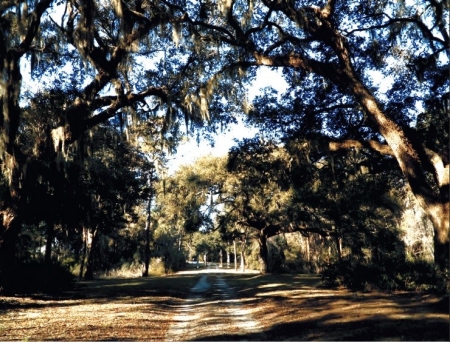My dissertation, “Reconstructions: The Material Culture of the Plantation, 1861–1877,” scrutinizes the attempt, during the Civil War and postbellum period, to remake the plantation landscape both physically and pictorially. In its association with civilizing missions and its resistance to those missions, the postwar South was a contradictory place, made even more so by northerners determined to represent it as peculiarly flawed because of its relationship to slavery. While northern reformers saw the southern plantation as distinctively defective territory of the United States and attempted to bring it into alignment, white and black southerners resisted this formulation.
I use four case studies to ask how the shifting plantation landscape found its way into aspects of material culture: photography, architecture, decorative arts, and the very space that southerners and northerners inhabited. Photographs such as those taken by Henry P. Moore (1835–1911), a New Hampshire artist working in South Carolina during the war, highlight the perceived distinctiveness of the southern landscape and begin the process of refiguring the plantation for northern audiences as a frontier of opportunity. Architecture, including a prefabricated schoolhouse shipped by barge from Boston to the Sea Islands, was among the most significant forms deployed by northern reformers to “educate” and “civilize” the freedmen while “improving” the southern plantation landscape. Decorative arts, on the other hand, were strategically employed by freedmen to define themselves in opposition to their enslaved past and to challenge ministrations of northerners. Plantation landscapes were changed by freedom: returning planters who were formerly reliant on enslaved agricultural and domestic labor adapted to a change of circumstances that reduced agricultural output and thus a standard of living that had supported private and public displays of material wealth. The diverse constituencies of newly freed slaves, northern missionaries, and elite white planters fashioned a home for themselves on the postslavery plantation.
The plantation is a symbolic space for either celebrating or troubling over the American past. The images and artifacts used today to represent and convey the experiences of slavery were created during the Civil War and the immediate postbellum period. Thus, in a cruel twist, the materialization of freedom has been co-opted. The postslavery plantation is crucial to understanding not only the art and artifacts of the
Members' Research Report Archive
Rethinking the South Carolina Sea Island Plantation, 1861–1877
Dana Byrd [Yale University]
Wyeth Fellow, 2010–2012
Today the very word “plantation” may conjure up images of a processional landscape leading to a large house with tall white columns, faithful workers, women in hoop skirts, and outsized hospitality. These images are problematic, not because such elements were absent from the plantation, but because they shroud the “peculiar institution” at its core, slavery. In the antebellum era, the Sea Islands of South Carolina were organized around a system of cotton plantations reliant on enslaved labor and dominated by an elite planter class; accordingly, it was one of the wealthiest regions of the antebellum United States. The arrival of federal troops in November 1861 brought the Civil War to the Sea Islands and marked the end of slavery for nearly twenty thousand African Americans on plantations there. The plantation landscape was immediately transformed. Elite planters fled; in their wake, soldiers, northern missionaries, and freedmen forged an uneasy alliance as they lived and worked together in a space that had been relieved of the institution of slavery. These events opened the Sea Island plantations for re-imaging.

View from the big house, Cassina Point Plantation, 1835, Edisto Island, South Carolina. Author photograph